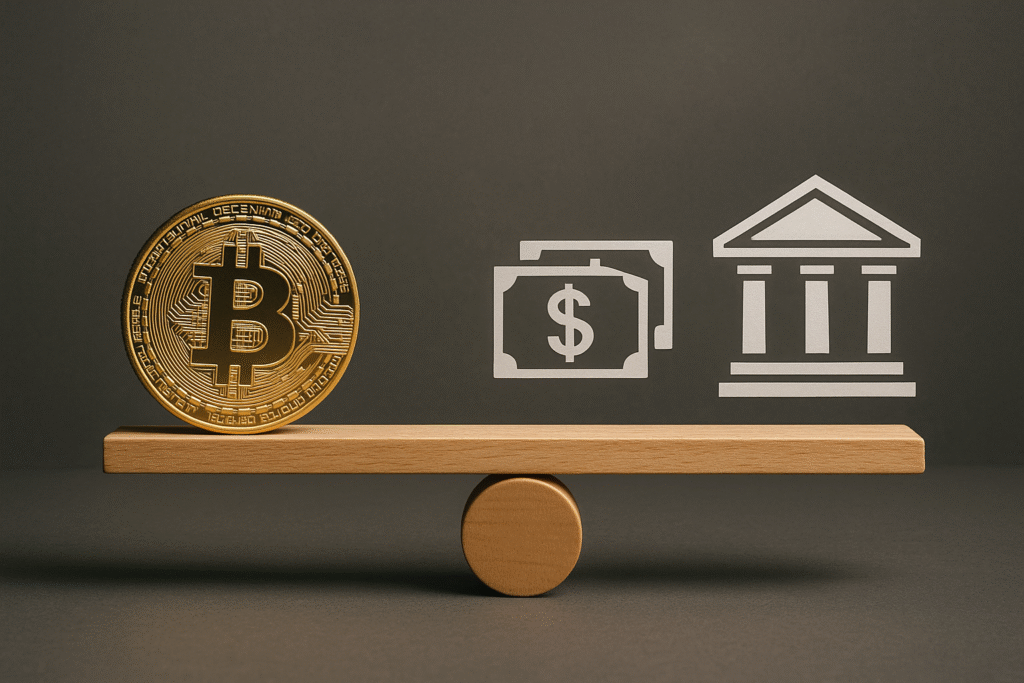
In early 2025, the global financial system is on the rebound. After a rocky 2024 marked by inflation jitters, central bank indecision, and geopolitical tensions, investor confidence is beginning to return. And once again, Bitcoin has found itself at the center of the conversation.
But this time, it feels different.
A New Cycle, Familiar Questions
Bitcoin (BTC) is trading above $60,000 again—an impressive feat after the sharp corrections in 2022 and 2023. Yet with every new rally, the same debate resurfaces: is Bitcoin maturing into a genuine store of value, or is it still just a high-risk bet riding a wave of speculation?
To answer this, we need to look at where the capital is coming from—and more importantly, why.
Institutional Confidence or Retail Mania?
Unlike past bull runs driven primarily by retail FOMO, this cycle is being fueled in part by traditional institutions. BlackRock, Fidelity, and other major players have launched spot Bitcoin ETFs that now hold billions in assets. Pension funds and family offices are cautiously dipping their toes in. The idea of a 1–3% allocation to Bitcoin is no longer fringe—it’s becoming mainstream.
According to data from Glassnode, the number of Bitcoin wallets holding over 1,000 BTC has steadily increased since Q4 2024. At the same time, on-chain metrics suggest that long-term holders (those who have held for over 155 days) are accumulating, not selling. This is a strong sign of conviction.
Macroeconomics and Monetary Policy
Part of Bitcoin’s appeal in 2025 comes from uncertainty around fiat currencies. While inflation in the U.S. and Europe has cooled, emerging markets are facing renewed monetary instability. In countries like Argentina, Nigeria, and Turkey, local currencies are under pressure, and citizens are turning to Bitcoin—not just as an investment, but as a lifeline.
Meanwhile, interest rate cuts are expected by mid-2025, weakening the dollar slightly and making yield-generating assets less attractive. This macro environment typically benefits Bitcoin and gold alike. But while gold remains relatively flat, Bitcoin is outperforming, suggesting a shift in perception.
Digital Gold or Digital Gamble?
The “digital gold” narrative is gaining traction—but it’s not without flaws.
Bitcoin is still volatile. In just the past six months, it’s experienced swings of 15–20% within days. No central authority controls it, which is both a strength and a risk. Regulatory uncertainty lingers in the U.S. and elsewhere. And let’s not forget: unlike gold, Bitcoin can be hacked, stolen, or lost due to human error.
Yet, as technology improves and security tools evolve, these barriers are being chipped away. Hardware wallets, custodial solutions, and insurance options are more accessible than ever. And with every successful halving cycle—like the one that occurred in April 2024—Bitcoin’s narrative as a deflationary asset gets stronger.
How Are Investors Treating It?
A 2025 Fidelity Digital Assets survey found that 68% of institutional investors now view Bitcoin as a legitimate part of a diversified portfolio. But their expectations are different from retail investors. They’re not chasing quick gains—they’re looking for asymmetric upside with a hedge against systemic risk.
What’s also notable is the rise in Bitcoin-denominated lending and staking platforms. Though controversial, these services show that people are beginning to treat Bitcoin as a productive asset, not just a speculative one.
A Cautionary Note
Of course, no investment is without downside. Crypto markets remain susceptible to manipulation, wash trading, and narrative-driven hype. If regulatory crackdowns intensify—particularly in the EU or Asia—it could halt this rally in its tracks.
Furthermore, Bitcoin’s environmental footprint, though improving with green mining initiatives, remains a talking point among ESG-conscious investors. Until this concern is fully addressed, it may limit broader institutional adoption.
The Verdict
So, is Bitcoin finally a true store of value?
The answer may lie somewhere in the middle. Bitcoin is certainly becoming more integrated into the global financial system and is slowly shedding its image as “internet magic money.” But it’s not risk-free—and it’s certainly not stable.
Perhaps the better question is: can an asset be both speculative and a store of value?
In 2025, Bitcoin is walking that line—and it’s doing so more confidently than ever before.
